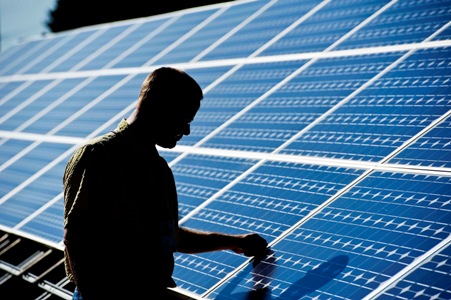
Researchers at Sandia National Laboratories looked into the problem and came up with a new system to monitor how clouds affect large-scale solar photovoltaic (PV) power plants.
The sensors observe cloud shape, size and movement in order to provide a way for utility companies to predict and prepare for fluctuations in power output due to changes in weather. The resulting models will give utility companies data to assess potential power plant locations, ramp rates and power output.
“Clouds can cause a PV plant to change from full power to about 20% of full power in a relatively short period of time, which depends on the size and layout of the plant and the type and velocity of the cloudsâ€, researcher Josh Stein told Energy Refuge.
“Currently, with solar plants accounting for a very small fraction of generation on most electrical grids these changes do not cause any problems for grid operators. However, if solar penetration levels increase in the future, as they likely will, such variability will pose problems for grid operators. A fast change in generation from cloud transients will need to be balanced by other sources of generation to balance loadâ€, he added.
The researchers’ work is currently focused at the 1.2-megawatt La Ola Solar Farm on the Hawaiian island of Lana’i. La Ola is the state’s largest solar power system, and can produce enough power to supply up to 30 per cent of the island’s peak electric demand, which is one of the highest rates of solar PV power penetration in the world. The high penetration of PV power on Lana’i, combined with the sun and cloud mix at the 10-acre La Ola plant, provided the researchers with the ideal environment for prediction and modeling research.
Research could not interfere with the ongoing operations of the plant, which currently sells power to Maui Electric Company ( MECO ), so Sandia engineers connected 24 small, nonintrusive sensors to the plant’s PV panels and used a radio frequency network to transmit data. The sensors took readings at one-second intervals to provide researchers with unprecedented detail about cloud direction and coverage activity. A radio frequency transmission system has the added benefit of being portable.
“The sensor network in Lanai is providing information about how large PV plants respond to spatially variable irradiance due to cloud shadows in Hawaii. Sandia is working with its industry partner, SunPower Corp., to deploy a larger sensor network at another location early in 2011. If this deployment proves successful, perhaps commercial applications will be identified”, said Josh.






1 Comment